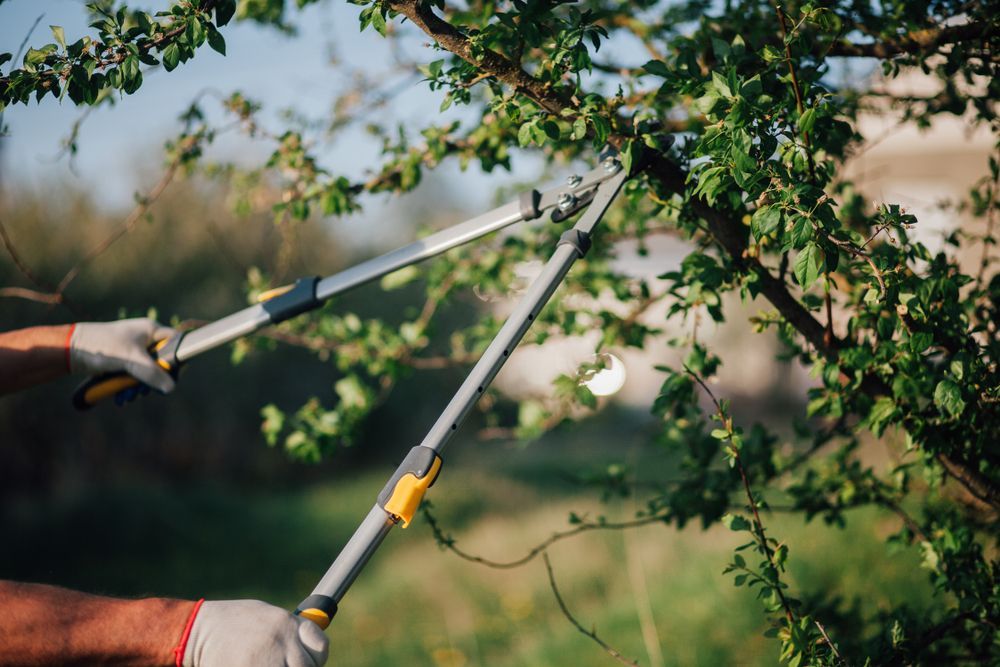Why Regular Tree Maintenance Is Essential for Property Safety

Table of Contents
- The Role of Trees in Property Safety
- Understanding the Risks of Neglected Trees
- Key Benefits of Regular Tree Maintenance
- Common Tree Maintenance Practices
- How Professional Tree Care Prevents Damage
- Real-World Scenarios Where Tree Maintenance Matters
- When to Schedule Maintenance
- Choosing the Right Tree Service Partner
- Final Thoughts on Tree Safety
Key Takeaways
- Regular tree maintenance significantly reduces the risk of injury or property damage caused by falling limbs or weak tree structures.
- Routine tree care enhances your property’s aesthetics, safety, and even market value.
- Proactive steps to prevent tree damage include pruning, trimming, and health evaluations by professionals.
- Partnering with a trusted expert like Fowlkes Tree And Stump Removal ensures long-term safety and peace of mind.
Trees and Property Safety: The Hidden Risk and Protection They Offer
Trees provide beauty, shade, and environmental benefits, but when neglected, they can pose serious threats to property and people. Many homeowners don’t realize how critical regular tree maintenance is until storm damage or unexpected limb falls cause thousands in repairs—or worse, result in injury. By investing in timely tree care, you’re not just improving your landscape; you’re safeguarding your home and family.
This guide explores the essential connection between
tree care and property safety, while offering practical tips and expert insight on how to
prevent tree damage before it happens.
The Role of Trees in Property Safety
Trees can be assets or liabilities depending on how they’re managed. Healthy trees provide:
- Windbreaks that reduce structural strain during storms
- Soil stabilization to prevent erosion
- Shade that regulates home temperature
- Increased curb appeal and property value
But when poorly maintained, those same trees become risks:
- Dead or overgrown limbs that fall unexpectedly
- Roots that damage foundations, sidewalks, or utility lines
- Entire trees that could topple during severe weather
This duality highlights the importance of regular tree maintenance to preserve the positive aspects while mitigating the risks.
Understanding the Risks of Neglected Trees
Ignoring tree upkeep may seem harmless—until it's too late. Here are common dangers:
- Falling branches: Dead or weak limbs can fall during wind, snow, or even on calm days, causing damage to roofs, cars, and people.
- Uprooting: Trees with root decay or poor structure can fall over completely during storms.
- Pest infestations: Dead wood attracts termites and other pests that can spread to your home.
- Utility hazards: Overgrown branches interfering with power lines increase fire risks and cause outages.
All of these can be proactively addressed through tree care routines.
Key Benefits of Regular Tree Maintenance
The benefits of regular tree maintenance extend far beyond aesthetics. They include:
1. Enhanced Safety
Keeping trees pruned and inspected reduces the risk of injury or damage from falling limbs and weak branches.
2. Prolonged Tree Health
Removing diseased or damaged limbs helps trees grow stronger and live longer.
3. Improved Property Value
Well-maintained trees increase curb appeal and can boost property value by up to 15%.
4. Storm Damage Prevention
Preparing trees before storm seasons can significantly prevent tree damage, especially in high-risk weather areas.
5. Legal and Insurance Protection
If a tree on your property causes damage due to neglect, you could be liable. Regular maintenance helps reduce that risk.
Common Tree Maintenance Practices
Professional tree care providers perform several routine tasks that preserve safety and health:
Pruning and Trimming
This removes dead or weak branches, shapes the tree for growth, and ensures safe distance from structures or wires.
Crown Reduction
Reduces tree height and canopy spread to minimize wind resistance during storms.
Root Inspection
Unseen problems in roots often precede a tree falling. Checking below the surface helps prevent tree damage early.
Disease and Pest Treatment
Injections or sprays prevent infestations that could weaken the tree or spread to nearby vegetation.
Cabling and Bracing
Used for older or compromised trees, this supports the trunk and limbs to reduce risk of breakage.
How Professional Tree Care Prevents Damage
While DIY methods exist, professional service ensures thorough inspections, safe equipment use, and expert decision-making. Hiring certified arborists from Fowlkes Tree And Stump Removal means:
- We evaluate the overall health and structure of each tree
- We recommend the right time and method for trimming
- We use proper safety protocols to protect your home and our crew
- We offer advice for future prevention and maintenance
A simple call to our team can help you avoid costly incidents and keep your property safe year-round.
When to Schedule Maintenance
Tree maintenance isn't a one-time task. Here's when you should plan evaluations:
- Spring: Ideal for pruning and fertilization to encourage new growth
- Late Fall: Remove dead limbs before winter snow or ice accumulates
- After Major Storms: Assess for hidden damage
- Every 1–2 Years: Have trees professionally inspected
Proactive planning with a local expert like Fowlkes Tree And Stump Removal ensures you’re always ahead of potential problems.
Choosing the Right Tree Service Partner
Not all providers offer the same level of skill, safety, or commitment. When hiring a tree service, look for:
- ISA Certification or licensed arborists
- Experience with local tree species and conditions
- Proper insurance and safety training
- Strong local reviews and references
- Transparent pricing and detailed service plans
At Fowlkes Tree And Stump Removal, we specialize in long-term property protection through expert tree care. We handle everything from pruning and storm prep to complete removals.
You can reach us by phone at
319-327-1199, or by email at
fowlkestreeandstumpremoval@gmail.com.
Final Thoughts on Tree Safety
Your trees are living, growing structures that need consistent care to remain safe. Investing in regular tree maintenance is one of the smartest decisions you can make to protect your home, family, and community. Whether it's removing dead branches, strengthening weakened trunks, or just ensuring overall health, every step of tree care contributes to safer, more beautiful surroundings.
If you’re unsure about the health or safety of your trees, don’t wait until a problem arises. Let Fowlkes Tree And Stump Removal help you prevent tree damage before it becomes costly. We’re here to provide dependable service, expert advice, and peace of mind.
Get Started Today
Contact Fowlkes Tree And Stump Removal at 319-327-1199 or visit us to schedule your inspection or service. Let’s work together to keep your property safe, one tree at a time.
Frequently Asked Questions
1. How does regular tree maintenance improve property safety?
Regular tree maintenance helps identify and remove weak, dead, or overgrown branches that could fall during storms or strong winds. By keeping trees trimmed and healthy, you reduce the risk of damage to your roof, vehicles, and walkways—making your property safer for everyone.
2. What’s included in professional tree care services?
Tree care typically includes pruning, trimming, disease management, soil testing, and structural assessments. These services are essential to maintaining tree health and stability, which helps to prevent tree damage before it leads to costly repairs or safety hazards.
3. Why is it important to prevent tree damage before storm season?
Storms often expose the weaknesses of unmaintained trees. Taking time for regular tree maintenance before the season begins ensures your trees are strong, well-balanced, and less likely to fall or lose limbs during high winds, helping to prevent tree damage to your home and nearby properties.
4. How often should I schedule tree care on my property?
For most properties, tree care should be scheduled at least once a year. However, if your trees are near structures, power lines, or have a history of disease, more frequent checkups may be needed. Consistency in care is the key to preventing tree damage and maintaining long-term tree health.
5. Can regular tree maintenance extend the life of my trees?
Absolutely. By removing dead limbs, treating infections, and improving structure, regular tree maintenance promotes healthy growth and increases the lifespan of your trees. Long-living trees not only provide beauty but also continue to protect your property through reliable shade and windbreaks.
